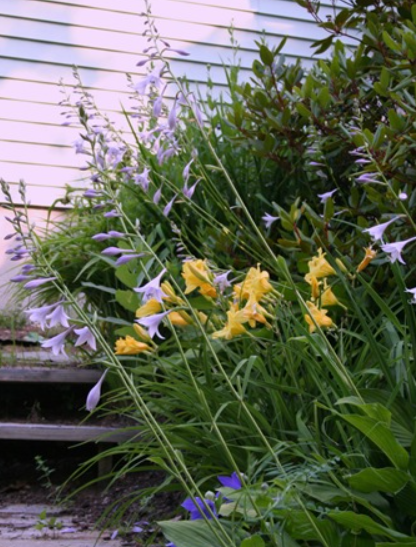Subtotal $0.00
Spire-shaped flowers are one of my favorite additions to any garden. These plants typically feature a triangular or conical shape, tapering upward to a pointed tip, resembling a rocket or spire reaching toward the sky. While I have a deep appreciation for shrubs in garden design, I’m equally enamored by the colorful, striking flowers that can be found in perennials and annuals alike.
These unique blooms aren’t just eye-catching—they can play several roles in your garden, adding structure, drama, and a sense of movement. Let me share some of the best ways to incorporate spire-shaped flowers into your garden.
1. Repetition of Spire Shapes
One of the most powerful design techniques is repetition. Whether it’s repeating the same plant or focusing on a specific characteristic like color or form, repetition creates harmony in a garden. When it comes to spire-shaped flowers, repeating their unique form across your landscape can be both soothing and visually appealing.
Plants like Echium or Veronica ‘Royal Candles’ can be repeated, with their spire shapes providing a cohesive structure. However, repetition works best when there is enough contrast between plants to keep the design dynamic. For instance, pairing spire-shaped flowers with a rounded form, such as a globe-like flower, can create an engaging visual contrast.
2. Using Contrast with Spire Shapes
While repetition offers harmony, contrast is essential to keep things exciting and unexpected. Mixing contrasting shapes and forms throughout your garden is a wonderful way to keep the eye engaged. For example, spire-shaped flowers like foxgloves or iris can be paired with round, ball-shaped blooms such as Allium to create visual interest.
The interplay between these different shapes—pointed spires against rounded balls—adds depth and dimension, preventing the design from becoming too predictable or monotonous.
3. Adding Height with Spire-Shaped Flowers
In many garden beds, the tallest layer tends to get the least attention. The middle of the bed often takes center stage, while the taller plants and ground cover are neglected. Spire-shaped flowers are perfect for addressing this imbalance. By strategically placing tall spires like Eremurus (foxtail lilies) or Delphiniums, you can draw attention to the upper layers of your garden, adding drama and vertical interest.
These towering flowers help balance the overall look of the bed and bring a sense of height that enhances the garden’s structure.
4. Spires Add Movement to the Garden
Spire-shaped flowers, with their upward-reaching form, create the illusion of movement in your garden. While they may not literally sway in the wind like grasses, they direct the eye upward, breaking the monotony of horizontal lines and encouraging the viewer to look up.
This visual movement adds excitement and energy to your garden, keeping it from feeling static. A group of spire-shaped flowers like Kniphofia or Astilbe planted together can lead the eye through the garden, adding rhythm and flow to the design.
5. Spire Flowers for Small Spaces
For those of you with smaller gardens, spire-shaped flowers are an excellent choice. Many varieties are compact and narrow, making them perfect for tight spaces. Whether you’re working with a small window box, a narrow garden bed, or a cozy spot next to a rock, there’s likely a spire-shaped flower that fits your needs.
Plants like Ptilotus or Bulbine frutescens can add height and interest without overwhelming smaller spaces. Their vertical growth helps fill out tight areas and can create a striking focal point, even in limited space.
Conclusion
Spire-shaped flowers are a versatile and stunning addition to any garden. Whether you use them for repetition, contrast, height, movement, or to enhance smaller spaces, these flowers offer both beauty and functionality. With their unique shape and structure, spires can transform any garden into a dynamic and engaging landscape.












